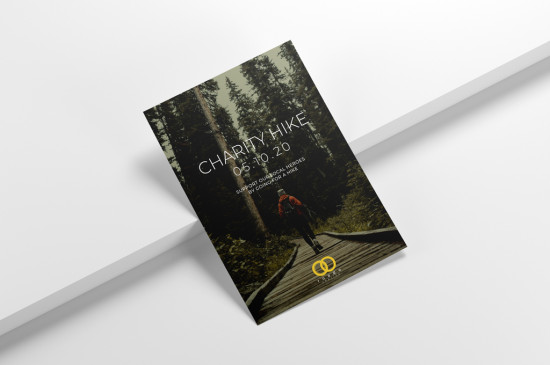 A5 Flyers & Leaflets
A5 Flyers & Leaflets
A5 flyers are a fast, cost effective way to promote your business and advertise products, sales, events or menus.
A good size for letterboxing, countertop and front desk distribution, A5 flyer printing can be turned around in 1 - 2 days and delivered Australia-wide.
Print as few as 100 or as many as 10000 A5 flyers full colour, double sided or single sided. Your cheapest per unit flyer printing option is to go with 1000 A5 flyers or more. You’ll find that costs are mostly associated with printing set up, so it’s easier to get a lot printed at once.
We print on premium matt and gloss paper stock, from 115gsm to 300gsm card and two impressive 100% recycled options. We have every style to suit your purpose and reflect the quality that you want to convey to your customers and clients.
Document sizes
Standard International Paper Sizes come in three ranges – A, B and C. The most widely used for general printing and stationery is the A series.
A4 is known as international letterhead size (297mm x 210mm). It’s easy to hold, store in a file or folder, and has space for a lot of information, photographs and diagrams. Most office printers take A4 paper.
A5 size is half A4, so 148mm wide x 210mm deep. A5 fliers don't take up so much space and cost a little less to print than A4.
Printed pages
Printers and designers often speak of booklets and brochures having a certain number of printed pages or ‘pp’. 1pp A5 means printing on one side of a sheet of A5 paper or card. 2pp A5 is printing on both sides of an A5 sheet. With fliers, we often just say single sided or double sided printing.
Portrait or landscape
Portrait or landscape orientation has its origin in visual art, referring to the ratio of dimensions used when painting a portrait of a person’s head and shoulders, or for a picture incorporating a built or natural landscape.
Portrait means the A5 flier design is vertical, 148mm wide by 210mm deep. A5 landscape is on its side, 210mm wide x 148mm deep. This is relevant when thinking about how it will be held and what paper is best to use.
Paper types
Paper (or paper stock) used in commercial printing has a language all its own. The weight of paper is measured in gsm, or grams per square metre. As a guide, copy paper is 80gsm, gloss or matt flier paper commonly starts at 115gsm and business cards are printed on 300gsm to 350gsm paper referred to as card stock or board.
You may have heard about coated and uncoated paper. That doesn’t refer to laminating or celloglazing, but how the paper is manufactured.
Uncoated stock is paper in its natural state. The tiny gaps between the fibres mean it is more porous, will absorb more ink and has a slightly rough feel. When it is printed, edges are softer and colours not quite as vivid, but it has a welcoming look and feel and is a great match for the right business brands. Most (but not all) 100% recycled stock is uncoated.
Coated stock is produced by filling the gaps between the paper fibres with chalk or china clay and natural or synthetic binders. The paper is then calendered – pressed between rollers – to smooth the surface. Coated stock is therefore less absorbent to ink, making printed colours brighter and detail crisper. When a paper is described as gloss, matt, satin or silk, this means it is coated.
The same weight uncoated paper often seems heavier than a coated stock, so it is a good idea to look at samples, or ask your printer or designer’s advice on choosing the right stock for your purpose.
Both coated and uncoated stock can be given further finishes such as celloglazing, laminating or spot UV varnish. It is often easier to write on uncoated stock if you’re getting a form printed but coated stock can be more resistant to moisture and dirt.
Full colour
Full colour printing is a lot more economical and available in smaller quantities than it used to be. This is largely due to technological advances and digital printing. The inks used in full colour printing haven’t changed, though.
The term ‘CMYK’ is often thrown around by printers and designers. This stands for four inks – cyan, magenta, black and yellow – that are used to produce full colour printing. It is very important that artwork and images used in full colour printing are set to CMYK.
RGB or Red Green Blue is the colourspace of your computer and device screens and is used for digital artwork. RGB images printed in CMYK look a bit dull and washed out. That’s one of the reasons, if you’re supplying artwork for printing, it’s important to check out our artwork setup guide.
A5 flyer design
Whether you have a corporate style or want an updated or fresh new look, our graphic designers will make your message stands out from the crowd. They’re committed to great results and speedy turnaround.


